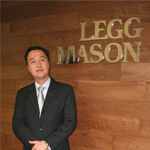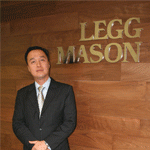Feature
Legg Mason brings multiple brands to clients
Legg Mason is making concrete moves worldwide and particularly in Asia. Tim Charlton speaks to Lennie Lim, Managing Director, Legg Mason Investments, to understand the operations and challenges faced by the investment house.Q. What are your strategies in terms of distribution and what companies do you work with?To answer your question, you have to understand Legg Mason. Legg Mason is very unique in the sense that it has a collection of wholly-owned investment managers. Legg Mason houses more than 10 investment affiliates and most of them are recognized as being best in class specialist in their own area of expertise.When Legg Mason acquires a firm, we recognise that it is very important to maintain their culture, for them to retain their investment process and investment autonomy. Legg Mason’s network of managers includes Permal and Western Asset Management.Permal is one of the largest hedge fund managers and Western Asset Management is among the top fixed income managers in the world and has over US$632 billion in assets under management (March 31, 2008). We have already launched Legg Mason Capital Management in Asia and are planning on introducing more of our investment affiliates to our distribution partners this year.Some of our other investment affiliates are Royce & Associates which follow a disciplined value approach in small and micro cap US equities.ClearBridge Advisors, which focus exclusively on managing US equities. We also represent Batterymarch which manage equities through the use of a mixture of quantitative models and qualitative fundamentals. They are a pioneer in quantitative analysis for equity management with expertise in UK, US, Europe and Asia since 1969.A number of our managers have enjoyed external recognition for their performance excellence. A few weeks back three of our affiliates collected awards from your local competitor, Asian Investor.Batterymarch won in the Pacific Equity category, Brandywine Global for their global opportunities bond fund and Legg Mason International Equities from our HK office for HK equities.As you can see we operate under different brands of our investment affiliates, clearly because it is to our best advantage.Q. Is that difficult, selling different brands to customers?Yes, it can be challenging. That is why I am very focused on working closely with our key distribution partners. Providing a high level of client service is of upmost importance to Legg Mason Investments. We nurture our key relationships and ensure that they are kept well informed about our various investment affiliates and their product capabilities.Q. Can you do better than your competitors because you have multiple brands?I can not answer that, but there are aspects of our business where we add a lot of value to our clients in ways that our competitors can not match. We add value by offering our distribution partners an extensive network of experienced and diversified investment managers. This is of course more challenging on the retail front where there is a greater focus on a single brand. That is why we aim to partner with retail banks that have strong relationships with their clients and are focused on long-term investment capabilities of the investment managers. Private Banks on the other hand are more focused on fund performance and bringing best of breed investment products with multiple brands is a strong point of differentiation – which is clearly our advantage. So that is why we don’t feel it’s necessary to have our brand advertised on the back of a bus to be well recognized by our clients.Q. How much of your sales are to the private banking channel and how much is to institutional investor channel?Our base with Private Banks is very substantial and our FoF and Insurance businesses are strong contributors to our numbers. Institutions that wish to invest directly into funds also form a large portion of our business.Q. Where would you like to be?We have a very strong foothold among the insurance clients and at the same time we have good relationships with large local distribution banks in Singapore.I want to see these existing client relationships grow and deepen. I am very pleased with the model here and am working with my team on emulating this approach in our other LMI offices in Asia.Q. Which funds are licensed to be sold through consumer banks in Singapore?We have a broad offering in Singapore. For sophisticated investors who typically have a wide range of investment requirements we offer over 35 funds across multiple investment affiliates, investment classes and styles. For retail investors we offer over 14 funds which have been tailored to meet the demands of local investors. For example, we offer SGD denominated funds that cater to customers with both a conservative or aggressive risk appetite and investment time horizon.Q. What is in demand right now from your product range?We work to our strengths. Legg Mason’s strength is in core asset classes. Providing long-term investment solutions in core portfolios is how Legg Mason has built its business to almost a trillion dollars in assets under management. We are the 9th largest asset management firm in the world with over 100 years of history. Legg Mason is singularly focused on money management and we excel in providing investment solutions in core asset classes. In particular, we have strong fixed income capabilities and a number of our distribution partners across the region are keen on funds from Western Asset Management. We are also strong in US and Asian equities. For example, Patrick Tan of Legg Mason International Equities (Singapore) is a renowned fund manager in Asian equities in Singapore. And of course, we have Bill Miller – our “Giant of Wall Street”.Q. Which are the funds in demand? Which are the best of your core funds?Right now we see that the market is really cheap for US equities. If you have a 3-5 year time frame, now is really the time to build a position in US equities. From the Asian side, a lot of people in Asia believe in the region. Local and regional investors can see that even though there is vulnerability in Asia, they still believe in the Asian growth story. Our Asia focused funds from Batterymarch and Legg Mason International Equities in Hong Kong and Singapore have performed well. Funds from these investment affiliates have strong long-term investment track records and can serve as either an entry point into Asian markets or as an enhancement to a customer’s core Asia-based portfolio.Q. What are you excited about? What about commodities? What core equity funds?No, I think commodities are “an over crowded trade”. I am personally putting my money in US equities - in the Legg Mason Value Fund. That fund is run by Bill Miller. He has a 25 year track record and is the only manager to have beaten the S&P index for 15 consecutive years – which demonstrates to me that he has the skills necessary to weather through various investment cycles.Q. Are any of your brands activist investors?A significant portion of our investment products and services across multiple managers are socially screened across a range of environmental, social and governance variables - but I am hesitant to label our managers as “activist” investors. From Legg Mason’s corporate perspective, we engage in some initiatives that support environmental, social and governance issues. For instance, Legg Mason is a signatory and member of the Carbon Disclosure Project (CDP), one of the most significant global initiatives to address climate change. Our new corporate headquarters in Baltimore is pre-certified as a Silver LEED (Leadership in Energy and Environmental Design) facility. LEED is the recognised U.S. standard for environmentally responsible buildings.Q. How would you describe your position in the private banking business? Where would you add value to the portfolio choices of private banks vis-à-vis other funds distributors?It all boils down to providing Private Banks with the best of the breed in investment choice. Our network of investment affiliates by design offers Private Banks diversity and access to some of the most highly regarded independent managers with strong long-term investment track records.Our managers are specialised in specific asset classes and that’s where they eat, live and breathe by that asset class. At the end of the day, I find my job to be extremely interesting as I have the privilige of offering these “best of the breed” managers to my key distribution partners in Asia.
Legg Mason brings multiple brands to clients
Legg Mason is making concrete moves worldwide and particularly in Asia. Tim Charlton speaks to Lennie Lim, Managing Director, Legg Mason Investments, to understand the operations and challenges faced by the investment house.Q. What are your strategies in terms of distribution and what companies do you work with?To answer your question, you have to understand Legg Mason. Legg Mason is very unique in the sense that it has a collection of wholly-owned investment managers. Legg Mason houses more than 10 investment affiliates and most of them are recognized as being best in class specialist in their own area of expertise.When Legg Mason acquires a firm, we recognise that it is very important to maintain their culture, for them to retain their investment process and investment autonomy. Legg Mason’s network of managers includes Permal and Western Asset Management.Permal is one of the largest hedge fund managers and Western Asset Management is among the top fixed income managers in the world and has over US$632 billion in assets under management (March 31, 2008). We have already launched Legg Mason Capital Management in Asia and are planning on introducing more of our investment affiliates to our distribution partners this year.Some of our other investment affiliates are Royce & Associates which follow a disciplined value approach in small and micro cap US equities.ClearBridge Advisors, which focus exclusively on managing US equities. We also represent Batterymarch which manage equities through the use of a mixture of quantitative models and qualitative fundamentals. They are a pioneer in quantitative analysis for equity management with expertise in UK, US, Europe and Asia since 1969.A number of our managers have enjoyed external recognition for their performance excellence. A few weeks back three of our affiliates collected awards from your local competitor, Asian Investor.Batterymarch won in the Pacific Equity category, Brandywine Global for their global opportunities bond fund and Legg Mason International Equities from our HK office for HK equities.As you can see we operate under different brands of our investment affiliates, clearly because it is to our best advantage.Q. Is that difficult, selling different brands to customers?Yes, it can be challenging. That is why I am very focused on working closely with our key distribution partners. Providing a high level of client service is of upmost importance to Legg Mason Investments. We nurture our key relationships and ensure that they are kept well informed about our various investment affiliates and their product capabilities.Q. Can you do better than your competitors because you have multiple brands?I can not answer that, but there are aspects of our business where we add a lot of value to our clients in ways that our competitors can not match. We add value by offering our distribution partners an extensive network of experienced and diversified investment managers. This is of course more challenging on the retail front where there is a greater focus on a single brand. That is why we aim to partner with retail banks that have strong relationships with their clients and are focused on long-term investment capabilities of the investment managers. Private Banks on the other hand are more focused on fund performance and bringing best of breed investment products with multiple brands is a strong point of differentiation – which is clearly our advantage. So that is why we don’t feel it’s necessary to have our brand advertised on the back of a bus to be well recognized by our clients.Q. How much of your sales are to the private banking channel and how much is to institutional investor channel?Our base with Private Banks is very substantial and our FoF and Insurance businesses are strong contributors to our numbers. Institutions that wish to invest directly into funds also form a large portion of our business.Q. Where would you like to be?We have a very strong foothold among the insurance clients and at the same time we have good relationships with large local distribution banks in Singapore.I want to see these existing client relationships grow and deepen. I am very pleased with the model here and am working with my team on emulating this approach in our other LMI offices in Asia.Q. Which funds are licensed to be sold through consumer banks in Singapore?We have a broad offering in Singapore. For sophisticated investors who typically have a wide range of investment requirements we offer over 35 funds across multiple investment affiliates, investment classes and styles. For retail investors we offer over 14 funds which have been tailored to meet the demands of local investors. For example, we offer SGD denominated funds that cater to customers with both a conservative or aggressive risk appetite and investment time horizon.Q. What is in demand right now from your product range?We work to our strengths. Legg Mason’s strength is in core asset classes. Providing long-term investment solutions in core portfolios is how Legg Mason has built its business to almost a trillion dollars in assets under management. We are the 9th largest asset management firm in the world with over 100 years of history. Legg Mason is singularly focused on money management and we excel in providing investment solutions in core asset classes. In particular, we have strong fixed income capabilities and a number of our distribution partners across the region are keen on funds from Western Asset Management. We are also strong in US and Asian equities. For example, Patrick Tan of Legg Mason International Equities (Singapore) is a renowned fund manager in Asian equities in Singapore. And of course, we have Bill Miller – our “Giant of Wall Street”.Q. Which are the funds in demand? Which are the best of your core funds?Right now we see that the market is really cheap for US equities. If you have a 3-5 year time frame, now is really the time to build a position in US equities. From the Asian side, a lot of people in Asia believe in the region. Local and regional investors can see that even though there is vulnerability in Asia, they still believe in the Asian growth story. Our Asia focused funds from Batterymarch and Legg Mason International Equities in Hong Kong and Singapore have performed well. Funds from these investment affiliates have strong long-term investment track records and can serve as either an entry point into Asian markets or as an enhancement to a customer’s core Asia-based portfolio.Q. What are you excited about? What about commodities? What core equity funds?No, I think commodities are “an over crowded trade”. I am personally putting my money in US equities - in the Legg Mason Value Fund. That fund is run by Bill Miller. He has a 25 year track record and is the only manager to have beaten the S&P index for 15 consecutive years – which demonstrates to me that he has the skills necessary to weather through various investment cycles.Q. Are any of your brands activist investors?A significant portion of our investment products and services across multiple managers are socially screened across a range of environmental, social and governance variables - but I am hesitant to label our managers as “activist” investors. From Legg Mason’s corporate perspective, we engage in some initiatives that support environmental, social and governance issues. For instance, Legg Mason is a signatory and member of the Carbon Disclosure Project (CDP), one of the most significant global initiatives to address climate change. Our new corporate headquarters in Baltimore is pre-certified as a Silver LEED (Leadership in Energy and Environmental Design) facility. LEED is the recognised U.S. standard for environmentally responsible buildings.Q. How would you describe your position in the private banking business? Where would you add value to the portfolio choices of private banks vis-à-vis other funds distributors?It all boils down to providing Private Banks with the best of the breed in investment choice. Our network of investment affiliates by design offers Private Banks diversity and access to some of the most highly regarded independent managers with strong long-term investment track records.Our managers are specialised in specific asset classes and that’s where they eat, live and breathe by that asset class. At the end of the day, I find my job to be extremely interesting as I have the privilige of offering these “best of the breed” managers to my key distribution partners in Asia.
Threading funds for Asia through the needle’s eye
After opening its office in Hong Kong, Threadneedle has its eyes on Singapore. Isaac Stewart speaks to James Campion, Head of Asia Distribution.
VP Bank the new kid on S’pore’s private banking block
In the midst of Singapore’s rise as the undisputed private banking hub of Asia, Isaac Stewart speaks to Reto Isenring, Managing Director of VP Bank, Singapore.
Legg Mason brings multiple brands to clients
Legg Mason is making concrete moves worlwide and particularly in Asia. Tim Charlton speaks to Lennie Lim, Managing Director, Legg Mason Investments, to understand the operations and challenges faced by the investment house.
Staying Positive While Accepting Brutal Reality
People who know me regard me as a naturally positive person, in that I typically view the proverbial glass as being half full rather than half empty. I am however also a realist who relies on empirical evidence to form opinions. These two different factions within me co-exist in an uneasy state of potential conflict. Obviously the current financial and economic crisis has put both my positive and realist states on an inevitable collision path.Nowhere is this more apparent than when I meet up with clients or have to speak at seminars to share my views on the market. While I would love to go out and tell investors what most of them would like to hear, namely that things will be alright and that financial markets will recover sooner rather than later, the realist side of me has been more domineering, as I lay out all the brutal facts as to why we believe it will take several years to undo the mess we find ourselves in today. Doing this however makes me feel like I am the harbinger of doom, as clients go away feeling more depressed. So before I continue, here is a quick warning to readers who just want to read about the positive side of things - skip the next few pages and just concentrate on the last paragraph!Economy in the doldrumsThe outlook for the global economy continues to be shrouded in uncertainty as governments grapple with how best to tackle the financial crisis, which has morphed into arguably the deepest recession since the Great Depression. The IMF has recently warned that global growth would slow to +0.5% this year, well below the +2.5% typically used to define a global recession. In addition, the International Labor Office recently forecast in its annual report that 51 million jobs are likely to disappear by the end of 2009 as a result of the economic slowdown, pushing the global unemployment rate up to 6.5% by the end of the year. In fact, the US unemployment rate is already higher than this figure, having risen to 7.6% in January, the highest level since 1992. The latest jobs report also showed that payrolls plunged almost 600,000 for the month, bringing the total number of jobs lost over the last 13 months to a whopping 3.6 million, the biggest slump in the postwar period.It is not surprising then that Americans are cutting back on consumption, scaling back on spending for the sixth month in a row in December as their savings rate rose to 3.6%. This represented a reduction in spending amounting to US$102.4 billion, or 1% less than the month before. While cutting back on spending and reducing debt levels is definitely a prudent step in the right direction for these over-leveraged consumers, these reductions are severely hurting businesses, forcing companies to scale back on orders and trim workforce. All this is having a detrimental effect on the earnings of companies, many of which have already announced sharp reductions in earnings for the last quarter and are preparing the market for similarly bad numbers in the quarters ahead.Unfreezing the financial marketsOne of the key issues that needs to be resolved urgently is a plan to unfreeze capital markets, so that banks can and will start lending again and provide much needed liquidity to the system. In this regard, the market was waiting with much anticipation for US Treasury Secretary Timothy Geithner to outline a comprehensive plan to solve the problem once and for all. In the end, they were sorely disappointed with the US$1.5 trillion rescue plan that he finally unveiled.At the heart of the plan is the creation of a public-private partnership fund amounting to at least US$500 billion to recapitalize the banks, and another US$1 trillion to support consumer and business lending. The government also intends to subject major US banks to a rigorous stress test to determine if they can survive the economic downturn - essentially weeding out the institutions that are worth saving from those that should just be closed down. The Treasury and the Federal Reserve obviously believe that these measures will be sufficient to stabilize the financial system.Unfortunately the markets did not share this confidence, as equity indices all suffered a sharp sell off following the announcement. Many commentators were unsatisfied with the lack of details provided, seeing this as a sign that the authorities themselves were unsure about how to solve the problem. We understand that one reason why the plan took its current form was to satisfy different factions with differing priorities - one group wanted to focus on how to free banks from their toxic loans, while the other wanted to announce punishments for senior bankers and to impose punitive measures on bank shareholders. The problem with this is that these two objectives are mutually exclusive: you cannot punish the banks and restructure the banks at the same time. In seeking a compromise, the government ended up with a plan that arguably lacked enough bite to truly satisfy either objective.While it remains to be seen if the announced measures will be sufficient to unfreeze the financial markets, it does seem that the same problems that plagued the TARP are still unresolved, key among which is how to find a mechanism for pricing the toxic assets on banks' balance sheets. As such, the government may find themselves forced to take much firmer action sometime down the road.Protectionism raising its ugly headTo make things worse, there is now a growing threat of protectionism as governments naturally adopt policies to help their local industries and citizens. At the recently concluded World Economic Forum in Davos, politicians were united in agreeing that protectionism was the biggest danger facing the global economy. The US is seen as a major culprit in this regard, as seen by the recent bailout of the American auto industry and the "Buy American" provisions in the current economic stimulus bill, which favours US steel producers. The risk here is that other countries may impose similar protectionist policies, causing a repeat of the 1930's when nations raised tariffs to protect their own industries, thus affecting global trade and damaging the world economy.To his credit, President Barack Obama realized the potential implications of this stance and acted quickly, saying he would alter the "Buy American" language in the economic stimulus bill. However, his political will is going to be stretched to the limit as his fellow politicians are pressured to help their local communities. Another disturbing development is the fact that some Senators have already taken this "Buy American" mantra to the next level, proposing a "Hire American" proviso for banks that receive government bailouts. The US is by no means alone in gravitating to these policies. The Spanish government has offered to pay foreign labourers to return to their home countries, and the Singapore government has come out with a jobs credit scheme that helps preserve employment for Singaporeans and permanent residents.Over-reliant on government interventionAll these unresolved problems are contributing to the uncertainty in the marketplace. Hopefully a lot of this uncertainty will be removed in the months ahead with the implementation of the various government initiatives. We however expect a rocky road ahead, as politicians continue to debate the best approach to address the problems. With the Republicans already putting up stiff opposition to the economic stimulus package, imagine the kind of resistance Timothy Geithner will face with his bank bailout proposal.It is always disconcerting to have your fate lie in the hands of a bunch of politicians, but this is the uncomfortable position we find ourselves in right now. Optimistic investors who are banking on a quick turnaround in asset prices are relying on these politicians to act decisively and quickly in coming out with the right policies to solve the economy's problems. However, the reality is that there is no quick or easy solution to the current mess we find ourselves in.Structural downturn may lead to a decade of lost returnsAll the above problems suggest the current recession may be a structural downturn that will take far longer to recover from than the usual cyclical downturn. This sparked us to go back in history to find similar “abnormal” periods where financial market returns were negative or flat over a prolonged period of time. We identified three such abnormal periods – namely the Great Depression of the 1930s, the Stagflation period in the 1970s, and the Japanese Deflation “lost decade” of the 1990s. The common observation from all these periods was that investors failed to get positive real returns over a five- to ten-year time horizon.The risk of a similar abnormal period repeating itself over the next five to ten years prompted a review of our investment strategies, particularly for our clients who have a shorter time horizon and who need to drawdown on their investments during this period. As a result of our analysis, we decided that we have to tweak our investment strategy and introduce a new set of portfolios (and management style) to cater to clients who have a shorter time horizon.So far this article has been dominated by the realist side of me, laying out all the brutal facts above, preparing you for the tough times ahead. The optimistic side of me however wants to end this on a positive note. While we are facing challenging times, there are attractive investment opportunities for long-term investors who can ride through volatility. I have absolute confidence in the strength of the human spirit to withstand adversity. After a period of cleansing and clearing out the excesses, the economy will undoubtedly continue on its former growth path and asset prices will inevitably recover. It may take a little more time and the journey will likely be a bumpy one, but we will be rewarded for our perseverance. -- Daryl Liew
Staying Positive While Accepting Brutal Reality
People who know me regard me as a naturally positive person, in that I typically view the proverbial glass as being half full rather than half empty. I am however also a realist who relies on empirical evidence to form opinions. These two different factions within me co-exist in an uneasy state of potential conflict. Obviously the current financial and economic crisis has put both my positive and realist states on an inevitable collision path.







 Advertise
Advertise









